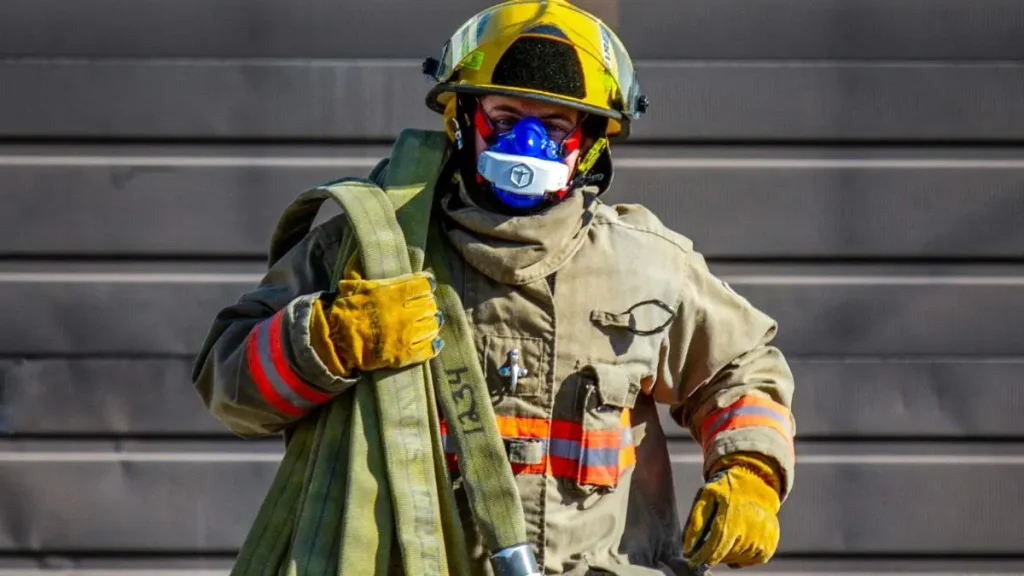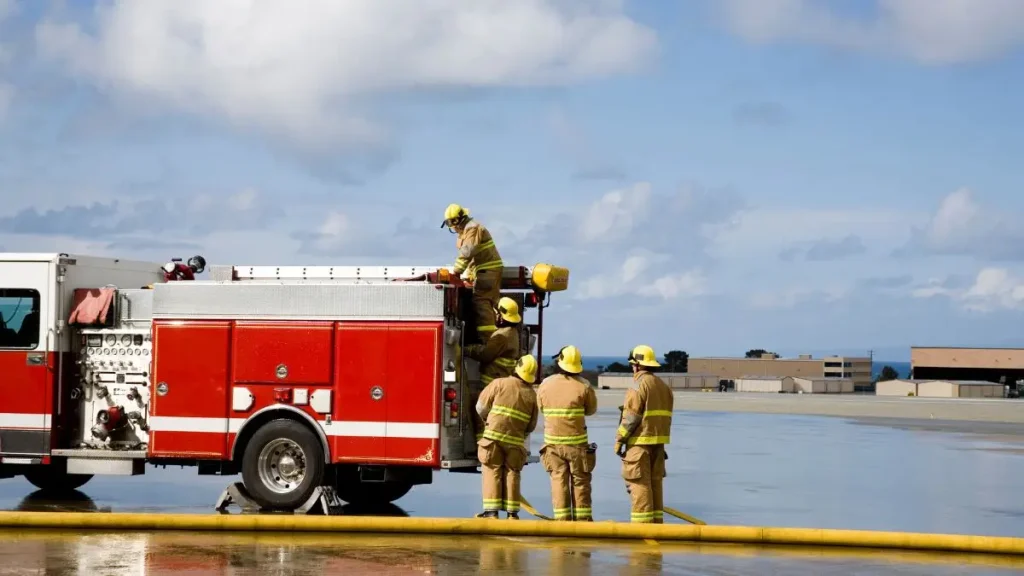Ames Firefighters Contain Blaze That Damaged Local Home
When I first came across the news about the Ames home fire, the first thing that stood out wasn’t the flames — it was how quickly things could’ve turned tragic. Around 4:42 p.m. on a quiet Tuesday, firefighters in Ames were called to a home near Tripp Street and South Franklin Avenue. By the time they got there, thick smoke was pouring out of a second-floor window. Inside, two bedrooms were already burning.
The fire crews moved fast. Within minutes, they stopped the flames from spreading beyond the top floor — something that doesn’t happen often once a blaze gains momentum. Thankfully, the family made it out safely. Sadly, their two cats didn’t survive, which hits harder than most people realize. Pets are family too.
What really struck me here is how the family’s quick action likely made all the difference. One of the residents, a woman who was downstairs when the alarms went off, didn’t panic. She searched, found the fire, and got her kids out. Then, when the extinguisher didn’t work, she did something most people forget — she closed the door to the burning room before calling 911. That small move slowed the fire’s spread long enough for firefighters to take control.
I’ve seen dozens of similar cases, and it’s this kind of calm, decisive response that often separates survival from tragedy. The cause of the fire is still under investigation, but this incident is a reminder that fire preparedness isn’t about luck — it’s about presence of mind when seconds matter.
If you were in her place, would you know what to do? Think about that for a second — because that’s where real safety starts.
The Woman Who Acted Fast
According to WHO 13 News, the Ames Fire Department said one woman in the home was the reason everyone made it out alive. When the smoke alarms went off, she didn’t waste a second. She searched upstairs, saw flames inside one of the bedrooms, and immediately got her kids out of the house.
Most people would stop there — and that alone would’ve been the right move. But she went a step further. She grabbed a fire extinguisher, tried to knock down the flames, and when that didn’t work, she shut the door to that room before calling 911.
That single act — closing the door — probably saved the house from being completely gutted. It’s something fire experts have said for years: a closed door can slow the spread of smoke, heat, and fire dramatically. The Ames Fire Chief, Rich Higgins, even credited her for quick thinking and calm under pressure.
This is the kind of story that reminds me why I always tell families — never underestimate small actions. Fire safety isn’t about heroics; it’s about awareness, timing, and staying clear-headed when it counts.
Firefighters’ Swift Response & Containment

By the time crews arrived at the scene, the top floor was already under threat. Yet, the Ames Fire Department moved with precision. They entered the home, found active fire in two bedrooms, and within minutes, managed to keep it from spreading further.
That’s not easy to do. Once a blaze jumps rooms, it often takes the rest of the house with it. But their training — and maybe that closed door — gave them the upper hand.
From what I’ve seen over the years, fire containment often comes down to seconds. The faster the team locates the fire’s origin, the higher the chance of saving not just property but lives. Ames firefighters did exactly that.
This moment also reflects something people don’t see often: the coordination between dispatchers, first responders, and on-ground crews. Every single minute matters, and this time, they nailed it.
What Officials Are Saying?
Fire Chief Rich Higgins later confirmed that the cause of the blaze remains under investigation. But he emphasized something crucial — the family’s working smoke alarms were the first line of defense.
Officials also used this moment to remind residents to test their alarms regularly and make sure extinguishers are accessible and functional. It might sound repetitive, but the Ames fire proves those basic steps still save lives.
You’d be surprised how many homes I visit where alarms are disconnected or batteries are dead. Fires don’t wait for convenience — they strike when you least expect it.
This fire also shows the importance of community awareness. When incidents like this happen, the goal isn’t just to report them — it’s to learn from them before another family faces the same risk.
Similar incidents have happened in nearby regions, like the Peoria house fire that caused $20,000 in property damage, highlighting how quickly accidents can escalate.
Lessons from the Ames Home Fire
Every house fire leaves behind a story — and a few hard-learned lessons. This one is no different.
- Smoke alarms matter. They gave this family the warning they needed.
- Close the door. It slows down the fire’s growth — something most people overlook.
- Never delay calling 911. Seconds of hesitation can cost everything.
- Know your extinguisher. If you have one, make sure you actually know how to use it.
- Practice family drills. A plan only works if everyone remembers it under pressure.
It’s easy to read about a fire and think, “That won’t happen to me.” But safety isn’t about fear — it’s about control. The Ames fire shows that even in panic, quick, smart action can mean the difference between loss and survival.
Learning from past tragedies, such as the Cumberland County home destroyed in a fire can help families take proactive steps before disaster strikes.
Community Reaction & Local Support
In Ames, the news of the fire spread fast — and so did the support. Neighbors expressed relief that the family escaped unharmed, and many shared sympathy over the loss of the pets.
The Ames Fire Department publicly thanked the community for their cooperation and quick reporting. Events like this tend to unite neighborhoods, even in sadness. People step up with small gestures — offering meals, clothing, or just words of comfort.
Online, local groups and residents discussed how easily things could have gone differently. That’s the kind of talk that makes awareness spread — one story pushing others to check their alarms, plan escape routes, and stay ready.
Because sometimes, it takes seeing someone else’s close call to remind you what’s really at stake.
Have you or someone you know ever experienced a home fire? Share your story or tips in the comments — it could help someone stay safe.
Fire Incidents in Ames — A Growing Concern?

When you track local fire reports over the past few years, you start to notice a pattern. Ames might not make national headlines often, but the city has seen a steady number of residential fires — many caused by preventable issues like unattended cooking, electrical overloads, or old wiring.
That’s the quiet danger of comfort. When things feel normal, people forget how fragile that safety really is. The Ames Fire Department has repeatedly emphasized preventive awareness, yet small oversights — a heater too close to curtains, a charger left plugged overnight — keep triggering emergencies.
According to the Iowa State Fire Marshal’s Office, residential fires rise slightly during colder months due to space heaters and indoor heating systems. It’s not always about carelessness; sometimes, it’s just about not updating old habits.
The Ames home fire isn’t an isolated story — it’s a reflection of how quickly “just another day” can turn into a life-altering event. And if this incident reminds even one family to check their smoke alarms tonight, that’s already a win.
Residents who want real-time updates on local fire incidents and safety alerts often share them through community messaging groups like WhatsApp, which can be a helpful way to stay informed
How to Prevent House Fires — Expert Tips That Actually Work
Let’s cut the fluff — most people know the basics but rarely practice them. Here’s what actually makes a difference, based on what I’ve seen over two decades of covering and studying home safety incidents:
- Get your wiring checked once a year. Electrical fires often start behind walls — invisible until it’s too late.
- Never leave cooking unattended. The number one cause of home fires in the U.S. still comes from the kitchen.
- Give heaters space. Keep at least three feet of distance from anything flammable.
- Don’t overload sockets. Power strips are meant for convenience, not heavy load.
- Test your smoke alarms monthly. And change the batteries every six months — not just when they beep.
- Keep exits clear. Don’t block windows or doors with furniture. During smoke conditions, visibility drops instantly.
One small reminder from fire safety experts at NFPA (National Fire Protection Association): simply closing your bedroom door at night can reduce fire spread and lower smoke inhalation risk. It’s one of the simplest, most overlooked lifesavers there is.
You don’t need to live in fear — you just need to live prepared.
Past cases, including the Westmoreland County home fire emphasize why checking wiring and smoke alarms is critical for prevention.
Courage, Caution, and a Reminder for All of Us
What stays with me after reading about the Ames home fire isn’t just the loss — it’s the courage. A mother’s instinct, a moment of clarity, and a few smart choices prevented tragedy.
It’s easy to overlook that kind of everyday heroism because we tend to romanticize emergencies. But in real life, survival often comes down to boring, practical things: working smoke alarms, knowing where your extinguisher is, and remembering to close a door.
So before you scroll away, do this: check one safety item in your home right now. Make sure your alarms are working or at least note to replace those batteries tonight.
Because the next fire story you read shouldn’t have to be about someone you know.
For more detailed guides on fire safety and home protection, visit our Home Incidents section for step-by-step advice.
Disclaimer: All facts in this article are accurate according to the latest report from the Ames Fire Department. The cause of the fire is still under investigation and may be updated as new information emerges. Readers should always follow local fire safety guidelines and official instructions for the most current advice.


